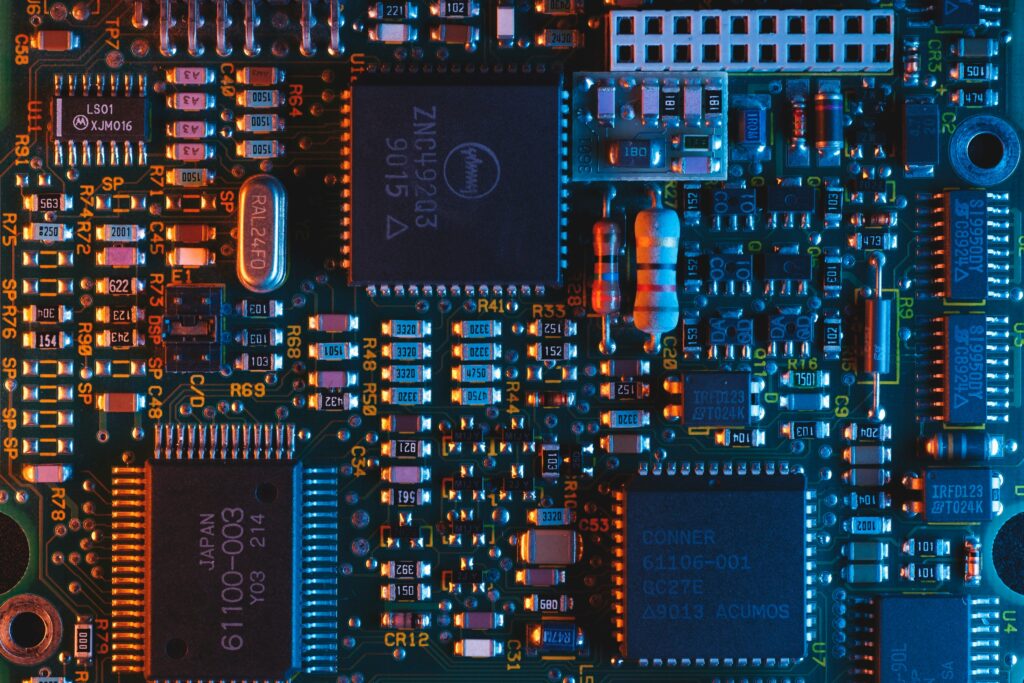Address
304 North Cardinal St.
Dorchester Center, MA 02124
Work Hours
Monday to Friday: 7AM - 7PM
Weekend: 10AM - 5PM
Address
304 North Cardinal St.
Dorchester Center, MA 02124
Work Hours
Monday to Friday: 7AM - 7PM
Weekend: 10AM - 5PM

There’s something unsettling about the quiet before a cyberattack hits. Like sharks beneath calm waters, digital threats circle businesses constantly, waiting for the right moment to strike.
Managed Detection and Response (MDR) security services stand guard against these invisible predators, and they’re changing how organizations handle their cyber defense.
Cyber threats often infiltrate systems silently, exploiting minor vulnerabilities and remaining undetected for extended periods. According to IBM’s 2025 Cost of a Data Breach Report, the average time to identify and contain a breach is 241 days across all industries (1).
Most cyber threats don’t announce themselves with fanfare; they sneak in through tiny gaps in security, often sitting undetected for months (the average is 207 days, according to recent studies). MDR fills these security holes by putting both smart tech and human brains on constant watch.
Think of MDR as a guard tower with both automated cameras and trained observers keeping watch. They don’t just wait for alarms, they actively hunt for anything that looks off.

Credit: unsplash.com (Photo by Glenn Carstens-Peters)
Think of MDR as your digital watchdog. It doesn’t take coffee breaks or call in sick. Just keep an eye on things 24/7. Here’s what it watches:
The system uses smart math (yeah, those AI algorithms everyone’s talking about) to spot things human eyes might miss. Like when someone’s downloading files at 3 AM from an office that’s supposed to be empty.
MDR integrates endpoint security and cloud monitoring to ensure nothing slips through unnoticed. Or when a computer suddenly starts sending data to some server in a country where your company doesn’t do business. MDR doesn’t just collect this stuff , it connects the dots.
A single weird login might not mean much, but when it’s paired with strange file transfers and odd network traffic, that’s when the system raises a red flag. Pretty neat how it pieces everything together, right?
The best part? This isn’t some set it and forget it tool. The system learns and adapts to how your company works. What’s suspicious for a bank might be totally normal for a marketing firm, and MDR figures that out.
According to IBM’s 2025 Cost of a Data Breach Report, organizations that deploy AI and automation in their security operations can identify a breach in an average of 184 days and contain it in 63 days, totaling 247 days.
In contrast, organizations without these technologies take an average of 239 days to identify and 85 days to contain, totaling 324 days (2) .
The security desk’s computer screen lights up with a map of their entire network. One screen shows it all. No more jumping between windows or missing crucial alerts. When something looks off , maybe an unusual login attempt or a weird file transfer , the team spots it right away.
Here’s what they see:
The screen’s layout makes sense, everything’s where it should be. Red flags stand out. If someone tries breaking in through the back door (so to speak), it shows up clear as day. The team doesn’t waste time hunting for clues, they just click and zoom right to the problem spot.
Think of it like a security camera system at a mall, except it’s watching computer systems instead of shoppers. The guard doesn’t have to run from store to store, they see everything from their desk. Same idea here.

Credit: unsplash.com (Photo by Umberto)
MDR analysts spring into action the moment something looks off. Like firefighters rushing to a blaze, they spot and squash advanced persistent threats before they spread.
Their job? To catch the bad stuff fast and shut it down, usually while everyone else is going about their day.
Time’s precious in this game , those first few minutes can make all the difference between a close call and a real mess.
Once the immediate danger’s gone, these analysts roll up their sleeves and get down to the nitty,gritty. They piece together what went wrong, step by step, like putting together a puzzle with missing pieces. It’s not just about fixing today’s problem , it’s about making sure it doesn’t come knocking again tomorrow.
Key steps they take:
Setting up your own security center hits the wallet hard. Most companies don’t realize it’s going to cost them millions until they’re knee,deep in expenses. Here’s what drains the budget:
MDR services, on the other hand, spread these costs across hundreds of clients. They’ve already got the people, tools, and know-how in place. Think of it like joining a gym instead of building one in your basement, you get all the benefits without the crushing overhead.
The math works out pretty simple: MDR might cost $150,000 yearly while an in-house team easily runs past $2 million. That’s money that could go somewhere else in the business. Smart thinking, really.
Security teams face an uphill battle every day. Their computers spit out hundreds of alerts, and most turn out to be nothing. Managed Detection and Response (MDR) steps in to fix this headache. It’s like having a smart filter that shows what really needs attention.
Here’s what changes when MDR takes over:
Following rules isn’t fun, but breaking them costs money. Those pesky regulations (GDPR, HIPAA) stick around like that one relative who overstays their welcome. MDR keeps an eye on both threats and paperwork requirements.
What MDR handles for compliance:
The system works kind of like a security guard who’s also really good at organizing files. They watch for trouble while making sure all the right boxes get checked. No more scrambling when auditors show up, no more missed requirements hiding in some forgotten folder.
It’s straightforward stuff really , your team spends less time drowning in paperwork and more time protecting what matters. And that’s exactly what they should be doing.
Think of MDR teams as your high-tech security guards who never sleep. These teams pack more punch than typical IT workers, manage security services giving businesses global threat coverage, and they’ve seen and stopped countless attacks from Buenos Aires to Bangkok.
a clear example of how managed detection and response expertise scales across industries. Picture them sitting at their desks with live feeds from security systems worldwide, spotting trouble before it hits.
They bring three key things to the table:
MDR teams spot weird patterns in computer traffic like a cop notices a suspicious car on an empty street. When something’s off, they don’t just write a report , they jump in and fix it. Right away.
The global threat data they use? That’s like having eyes and ears in every major city, watching for troublemakers. When someone tries a new trick in Tokyo, MDR teams in Toronto know about it almost instantly.
Makes you wonder why anyone wouldn’t want these guys watching their back.
Business expansion brings new security challenges. MDR doesn’t just sit still , it grows right alongside your company. When changes hit (and they always do), MDR shifts to match your needs:
The best part? Your existing security setup stays intact. No starting over, no headaches, just smooth transitions as your company evolves. MDR flexes and stretches to fit whatever shape your business takes, kind of like a really smart rubber band (but way more secure).
Think of it like having a security guard who learns your company’s new routines without missing a beat. They’re already there, already know the basics, and just need to adjust to the new normal. That’s MDR , always on duty, always learning, always protecting.
The numbers don’t lie: MDR services might be the best thing to happen to corporate security since someone thought to put locks on server rooms. Companies can focus on their actual business , making widgets or selling services or whatever pays the bills, while professionals handle the constant stream of cyber threats (there were 2,200 attacks per day in 2022 alone).
It’s like having a whole team of security experts on call 24/7, but without the headache of managing another department. They spot the warning signs, react fast, and deal with problems while everyone else keeps working. Pretty straightforward stuff.
No magic solutions here, but it’s a whole lot better than crossing your fingers and hoping nothing bad happens. When the average data breach costs $4.35 million, that’s not really a risk worth taking.
MDR, or Managed Detection and Response, is a powerful way for businesses to stay safe from cyberattacks. Cyber threats do not wait. They can sneak in quietly and cause serious damage if they go unnoticed.
MDR combines advanced technology with skilled security experts who monitor networks, systems, and data all the time. This means threats are spotted and stopped quickly, often before they can do any real harm.
One of the biggest benefits of MDR is cost. Building a full in-house security team can be very expensive with high salaries, software costs, and training expenses. MDR spreads these costs across many clients, giving businesses access to top-level security without spending too much money.
In short, MDR keeps businesses safe, saves money, and scales with growth, making it an essential part of modern cybersecurity.
Join our MDR services today and strengthen your defense with expert guidance and proven solutions.
Managed security services with SIEM integration provide centralized log management services, real-time cybersecurity alerts, and threat analytics. This improves threat detection accuracy, reduces false positives, and helps security teams prioritize cyber threats while maintaining continuous security monitoring.
Vulnerability management, attack surface reduction, and security automation help identify weaknesses, reduce exposure to attacks, and automate repetitive security tasks.
These practices enhance cybersecurity resilience, lower the risk of breaches, and strengthen preventative cybersecurity measures across the network.
Forensic investigation MDR and rapid forensic analysis allow security teams to track the origin of attacks, contain incidents, and conduct detailed cybersecurity incident management.
These services reduce breach impact, support business continuity security, and improve cybersecurity visibility for future prevention.
Endpoint protection integration, managed endpoint security, and secure remote monitoring help detect malware, insider threats, and anomalous behavior across devices.
They support preventative cybersecurity, professional threat hunters, and adapting to the threat landscape to strengthen overall cyber defense.